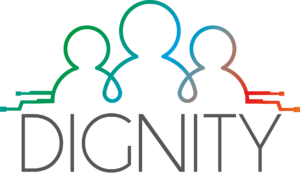
Lime is a micromobility service that enables users to hire Lime owned mopeds, scooters and bikes in cities. The app displays nearby locations of available vehicles. The user can go to a vehicle location as indicated on the app, scan the QR code with the Lime application and hire it for use.
Category: Digital vehicle sharing services/platforms
Developer: Neutron Holdings Inc.
Main function: Digital vehicle sharing service/platform
What is the main sub-function of the service/product: Bike sharing and Other vehicle sharing
Target group(s): General public/other
Countries/cities of operation: Over 100 countries, including France, Germany, Italy, Spain, the UK and the US
Technologies needed to use the service:
- Smartphone or tablet with the app installed and mobile internet connection
Is there a non-digital way to use this service or product? No
Why is this a good example?
| Reason(s) | Clear indication of the real-time location of the user and available vehicles |
| More details | Once signed in, the app shows users a map with a circle denoting their own location and the real-time locations of available nearby Lime vehicles. This makes it clear whether there is an available vehicle nearby or not. In addition, the travel time to get to a vehicle is also displayed on the map (e.g., 1 min walking). |
| Tags | Functionality-Real-time information |
| Reason(s) | Facility to start a group ride and book and pay a scooter for others |
| More details | It is possible to set up a group ride, in which one person is in charge of booking, paying for and unlocking multiple vehicles. This way enables people without a smartphone, internet access or credit card to join a trip, provided that at least one person in their group does have access to these. |
| Tags | Caters for low technology users |
| Reason(s) | The application is available in multiple countries, languages and currencies. |
| More details | The application is available in many different countries. This allows users to keep using the application and the Lime services when they are travelling abroad. This reduces the need to download new applications or discover new services. |
| Tags | International Aspects |
| Reason(s) | Integration with a Facebook or Google account |
| More details | Instead of creating a separate account, users can sign in with a Facebook or Google account. This simplifies the process in several ways. For example, if using a Google account, the personal details are automatically filled in and the application is automatically linked to the user’s Google Pay account. |
| Tags | Usability-User registration |
| Reason(s) | Help facilities |
| More details | The application has a built-in help centre for those having difficulties with their booking, payment or unlocking of the vehicle. A long list of frequently asked questions has been implemented. If a user`s question is not in there, they can submit a request directly. |
| Tags | Usability-Help facilities |
| Reason(s) | Simplified user interface based on Google maps |
| More details | The interface does not show many details or buttons. It uses a base map from Google maps, enlarging the possibility that people will be able to ‘read’ it. |
| Tags | Usability-Simplicity |
| Reason(s) | Users pay per minute of rental |
| More details | The users pay at the end of a session for the length of the rental period. Users can see the total cost of their ongoing rental(s) at all time at the top of their screens. This provides potentially useful information. |
| Tags | Cost |
| Reason(s) | Allows people with limited physical health to be mobile |
| More details | Using a scooter is a low threshold way of travelling (short) distances in an easy and quick way. Because the scooters are electric, also people who are limited in their ability to walk or cycle are able to use them. |
| Tags | Specific user groups- People with disabilities |
If you would like to know more about why this product is part of this catalogue or what aspects of this example are specifically appropriate, click here to view the full DIGNITY Interactive Catalogue, which contains further information.

